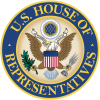Is Inter Partes Review Good for the Patent System?
The America Invents Act (AIA) ushered in a new era for patent law and procedure at the United States Patent and Trademark Office. Among the changes that took effect were the much-debated shift away from the first-to-invent standard and to a first-to-file standard that is far more consistent with the rest of the world, although not identical.
Philosophically, the shift to a first-to-file system represents a major shift, but in truth, the U.S. had a de facto first-to-file system already. It had been years since a small entity (i.e., a company with 500 or fewer employees) had been able to prevail by demonstrating that they invented before another party filed a patent application. For the most part, much of the focus on first-to-file has done nothing more than divert attention from the most significant change from the patent owners perspective….
There is little doubt that the largest change ushered in by the AIA was the creation of administrative patent trials, namely Inter Partes Review (IPR), Post Grant Review (PGR), and Covered Business Method (CBM) Review.
Understanding Post-Grant Review
 Last week, I published an article about inter partes review on IPWatchdog.com. Patent Office statistics for FY 2013 and FY 2014 show that there have been a total of 361 decisions on IPR petitions, with 288 trials instituted. There have been 11 cases that have been joined and only 62 petitions denied, which corresponds with an 82.8% IPR petition grant rate. Having said this, the IPR grant rate during FY 2013 was 87.2%, while so far during FY 2014, the IPR grate rate has been 77.2%.
Last week, I published an article about inter partes review on IPWatchdog.com. Patent Office statistics for FY 2013 and FY 2014 show that there have been a total of 361 decisions on IPR petitions, with 288 trials instituted. There have been 11 cases that have been joined and only 62 petitions denied, which corresponds with an 82.8% IPR petition grant rate. Having said this, the IPR grant rate during FY 2013 was 87.2%, while so far during FY 2014, the IPR grate rate has been 77.2%.
But what about post-grant review?
Both inter partes review and post-grant review became a reality when “Phase 2” of the America Invents Act (AIA) became effective on September 16, 2012. But you haven’t seen any post-grant reviews yet, aside from the quasi-post-grant review known as covered business method (CBM) review. That is because the post-grant review provisions apply only to patents issued from applications that have an effective filing date on or after March 16, 2013. Said another way, post-grant review proceedings are only available to patents issuing from applications subject to first-inventor-to-file provisions of the AIA.
02.21.14 | Patent Issues, Post Grant Review, prior art, USPTO | Gene Quinn
PATENT REFORM–THE REMIX
 Scott McKeown, Partner at Oblon Spivak and Practice Center Contributor, sent in this article updating us on the status of H.R. 1249 aka “The America Invents Act” aka “Leahy-Smith America Invents Act”.
Scott McKeown, Partner at Oblon Spivak and Practice Center Contributor, sent in this article updating us on the status of H.R. 1249 aka “The America Invents Act” aka “Leahy-Smith America Invents Act”.
Significant Amendments Targeted for H.R. 1249
Hold up, wait a minute.
The America Invents Act has been seemingly remixed and re-released as the “Leahy-Smith America Invents Act.” All Republicans, throw your hands up, all Democrats, throw your hands up…
With the House now moving to floor debate of H.R. 1249, amendment proposals have come flying from all directions. Not surprisingly, some of the proposals aim to strike PTO fee setting authority, the end of fee diversion, as well as the first to file provision. Should these amendments be adopted, the bill would be killed. Another amendment, introduced by John Conyers (D-MI) seeks to strike everything but PTO funding (including the Detroit Office!). (more…)
06.17.11 | Patent Reform | Stefanie Levine


No Comments
11.27.15 | Patent Issues, Post Grant Review, posts | Gene Quinn